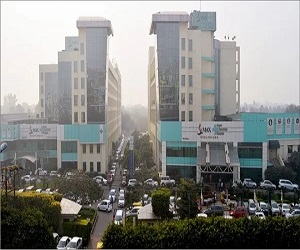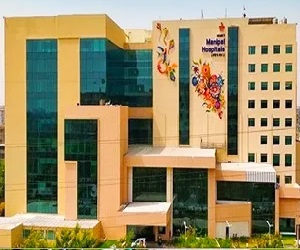Bone cancer arises when abnormal cells within the bone start multiplying uncontrollably, causing the destruction of healthy bone tissue. It can either originate within the bone itself or spread to the bones from another part of the body.
Bone cancer is rare. Most tumors that form in bones are considered benign, meaning they are not cancerous and do not spread to other parts of the body.
When do you need bone cancer treatment?
Surgery is often the first treatment option for patients with bone cancer. During the procedure to remove bone tumors, doctors excuse some of the surrounding bone and muscle to ensure they remove as much cancerous tissue as possible. When the tumor is located in an arm or leg, the medical team strives to preserve the limb and maintain its functionality whenever feasible.
Benefits of bone cancer treatment:
The primary goal of surgery is to eliminate all cancerous tissue.
Even a small amount of remaining cancer has the potential to develop into a new tumor or metastasize to other parts of the body. To reduce this risk, surgeons remove the tumor along with some surrounding healthy tissue.
Your doctor may the following to decide if you have cancer:
Imaging studies play a crucial role in determining the location and size of bone tumors, as well as whether they have spread to other parts of the body. Your specific symptoms and indications will dictate the recommended imaging tests. Some possible tests include:
- Bone scan
- Tomography performed with a computer (CT),
- Magnetic resonance imaging (MRI)
- X-ray.
How is the treatment done?
Surgery for bone cancer encompasses various approaches, with two primary methods being limb-sparing surgery and amputation. In limb-sparing surgery, the affected portion of the bone is excised, followed by the insertion of a metal implant or prosthesis to replace the removed section. Conversely, amputation involves the removal of the limb, which is then replaced with an artificial limb through a complex surgical procedure. Amputation is typically reserved for severe cases where limb-sparing surgery is not feasible.
What are recovery and post-op care after the treatment?
After surgery, getting up and moving around can be difficult. While movement is beneficial for recovery, it’s important to start slowly.
Nurses typically encourage patients to sit up one or two days after surgery. During the recovery period, it’s common to have drips and drains around the surgical site. Recovery experiences can vary widely.
First-time home goers will need help. Physiotherapists can help you arrange your first weeks at home.
What are the risks of cancer surgery treatment?
Short-term risks and side effects: Surgical procedures to eliminate bone cancer are often lengthy.
Bone Cancer Treatment cost in India are as follow
| Treatment | Cost in USD | Stay in Hospital |
| Bone Cancer Treatment | 4600-5500 | 8-9 Days |
| Bladder Cancer Treatment | 2300-2800 | 4-5 Days |
| Anal Cancer Treatment | 2300-2800 | 4-5 Days |
| Brain Tumor Surgery | 4800-5000 | 4-6 Days |
| Breast Cancer Treatment | 3700-4500 | 4-5 Days |














